*NURSING > QUESTIONS & ANSWERS > NSG6005 Week 2 Quiz / NSG 6005 Week 2 Quiz (2 New Versions, 2022): South University (SATISFACTION GU (All)
NSG6005 Week 2 Quiz / NSG 6005 Week 2 Quiz (2 New Versions, 2022): South University (SATISFACTION GUARANTEED)
Document Content and Description Below
Question 1. The elderly are at high risk of ADRs due to: Having greater muscle mass than younger adults, leading to higher volume of distribution The extensive studies that have been conducted on... drug safety in this age group The blood-brain barrier being less permeable, requiring higher doses to achieve therapeutic effect CORRECT Age-related decrease in renal function Question 2. The point in time on the drug concentration curve that indicates the first sign of a therapeutic effect is the: Minimum adverse effect level Peak of action CORRECT Onset of action Therapeutic range Question 3. Genetic polymorphisms account for differences in metabolism, including: Poor metabolizers (PMs) that lack a working enzyme Intermediate metabolizers (IMs) that have one working, wild-type allele and one mutant allele Extensive metabolizers (EMs), with two normally functioning alleles CORRECT All of the above Question 4. Steady state is: The point on the drug concentration curve when absorption exceeds excretion This study source was downloaded by 100000831988016 from CourseHero.com on 04-22-2022 07:29:29 GMT -05:00 https://www.coursehero.com/file/24730446/Quiz2Questionsdocx/ CORRECT When the amount of drug in the body remains constant When the amount of drug in the body stays below the minimum toxic concentration (MTC) All of the above Question 5. When obtaining a drug history from Harold, he gives you a complete list of his prescription medications. He denies taking any other drugs, but you find that he occasionally takes aspirin for his arthritis flare-ups. This is an example of: His appropriately only telling you about his regularly prescribed medications His hiding information regarding his inappropriate use of aspirin from you CORRECT A common misconception that intermittently taken OTC medications are not an important part of his drug history A common misuse of OTC aspirin Question 6. The angiotensin converting enzyme (ACE) inhibitor lisinopril is a known teratogen. Teratogens cause Type ____ ADR. A B C CORRECT D Question 7. Infants and young children are at higher risk of ADRs due to: Immature renal function in school-age children CORRECT Lack of safety and efficacy studies in the pediatric population Children’s skin being thicker than adults, requiring higher dosages of topical medication Infant boys having a higher proportion of muscle mass, leading to a higher volume of distribution This study source was downloaded by 100000831988016 from CourseHero.com on 04-22-2022 07:29:29 GMT -05:00 https://www.coursehero.com/file/24730446/Quiz2Questionsdocx/ Question 8. Patients with psychiatric illnesses have adherence rates to their drug regimen between 35% and 60%. To improve adherence in this population, prescribe drugs: CORRECT With a longer half-life so that missed doses produce a longer taper on the drug curve In oral formulations that are more easily taken That do not require frequent monitoring Combined with patient education about the need to adhere even when symptoms are absent Question 9. The time required for the amount of drug in the body to decrease by 50% is called: Steady state CORRECT Half-life Phase II metabolism Reduced bioavailability time Question 10. Which of the following factors may adversely affect a patient’s adherence to a therapeutic drug regimen? Complexity of the drug regimen Patient’s perception of the potential adverse effects of the drugs CORRECT Both A and B Neither A nor B Question 11. The type of ADR that is the result of an unwanted but otherwise normal pharmacological action of a drug given in the usual therapeutic doses is: CORRECT Type A Type B Type C This study source was downloaded by 100000831988016 from CourseHero.com on 04-22-2022 07:29:29 GMT -05:00 https://www.coursehero.com/file/24730446/Quiz2Questionsdocx/ Type D Question 12. A patient’s nutritional intake and lab work reflect hypoalbuminemia. This is critical to prescribing because: CORRECT Distribution of drugs to target tissue may be affected The solubility of the drug will not match the site of absorption There will be less free drug available to generate an effect Drugs bound to albumin are readily excreted by the kidney Question 13. Patient education regarding prescribed medication includes: Instructions written at the high school reading level CORRECT Discussion of expected ADRs How to store leftover medication such as antibiotics Verbal instructions always in English Question 14. Genetic testing for VCORC1 mutation to assess potential warfarin resistance is required prior to prescribing warfarin. True CORRECT False Question 15. Warfarin resistance may be seen in patients with VCORC1 mutation, leading to: Toxic levels of warfarin building up CORRECT Decreased response to warfarin Increased risk for significant drug interactions with warfarin Less risk of drug interactions with warfarin [Show More]
Last updated: 1 year ago
Preview 1 out of 6 pages
.png)
Reviews( 0 )
Document information
Connected school, study & course
About the document
Uploaded On
Apr 22, 2022
Number of pages
6
Written in
Additional information
This document has been written for:
Uploaded
Apr 22, 2022
Downloads
0
Views
83
.png)

.png)
.png)
.png)
.png)
.png)
.png)
.png)
.png)
.png)
.png)
.png)

.png)
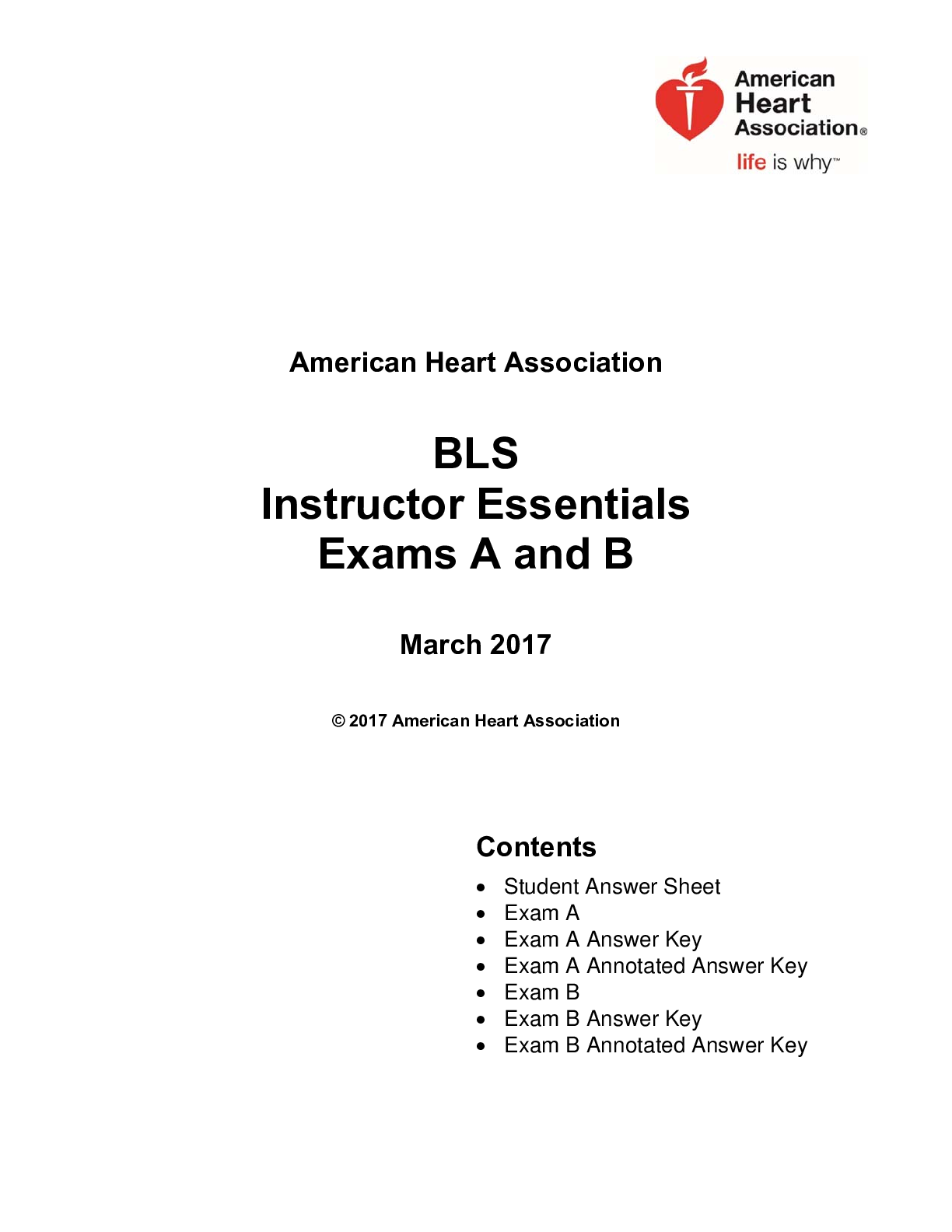
.png)
.png)
.png)
.png)
.png)
.png)
.png)
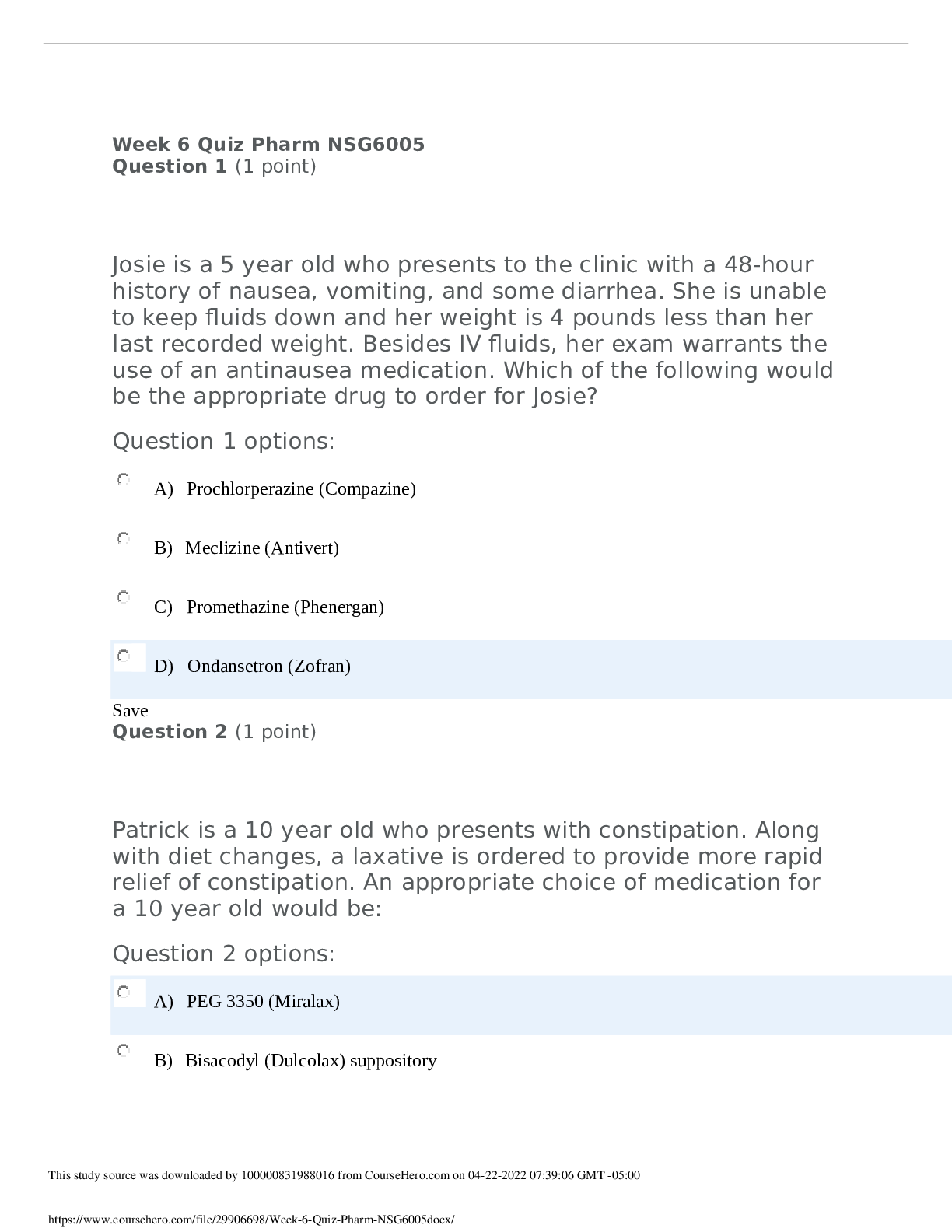
.png)

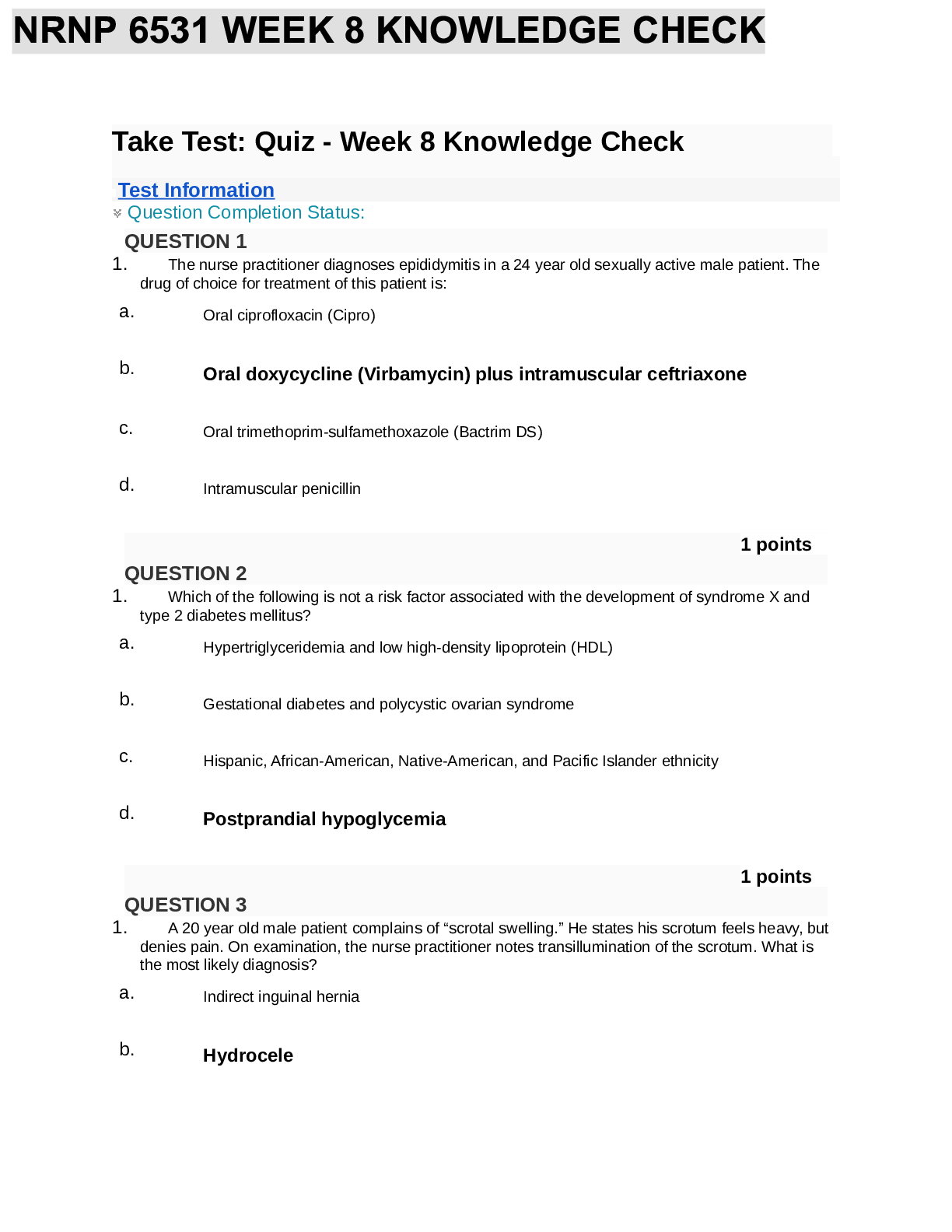
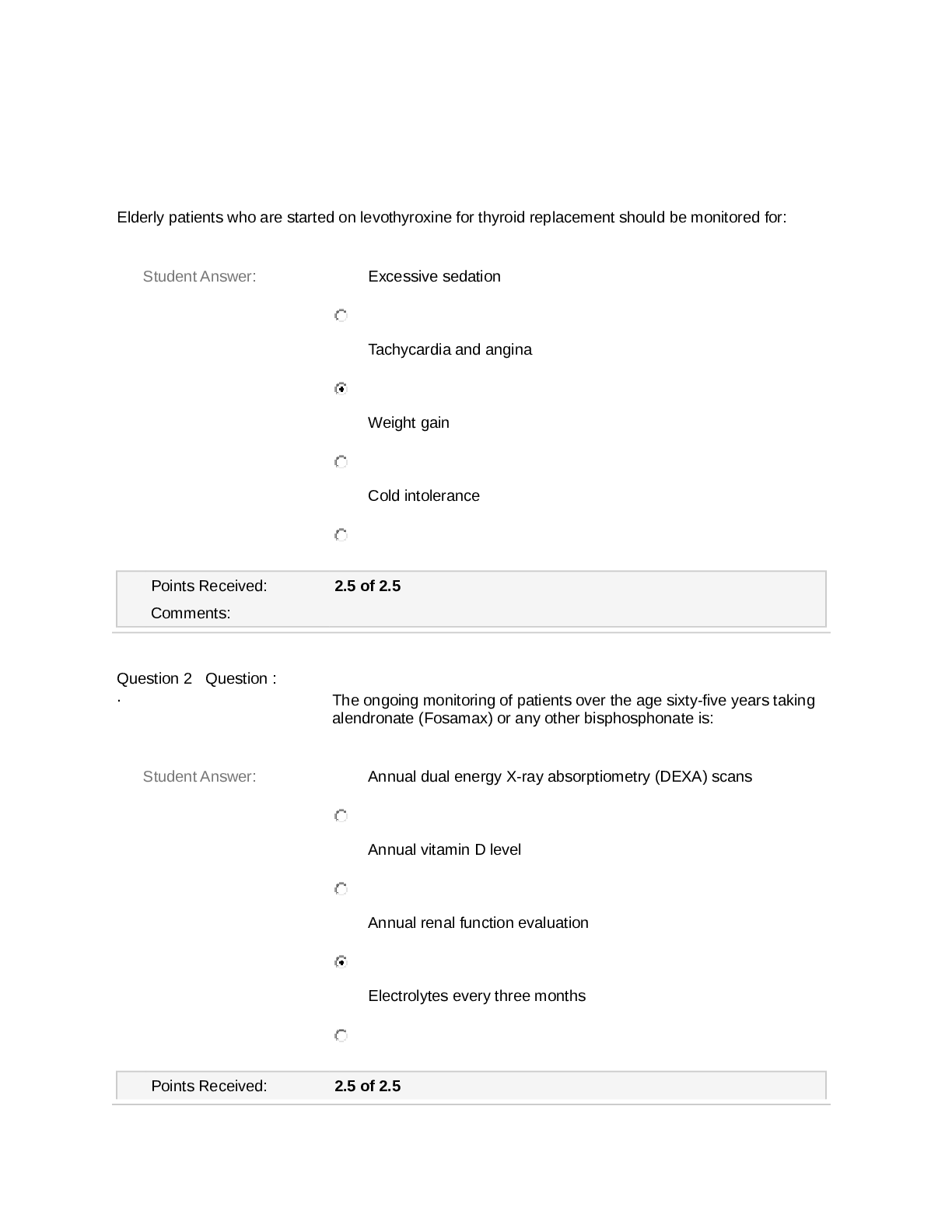

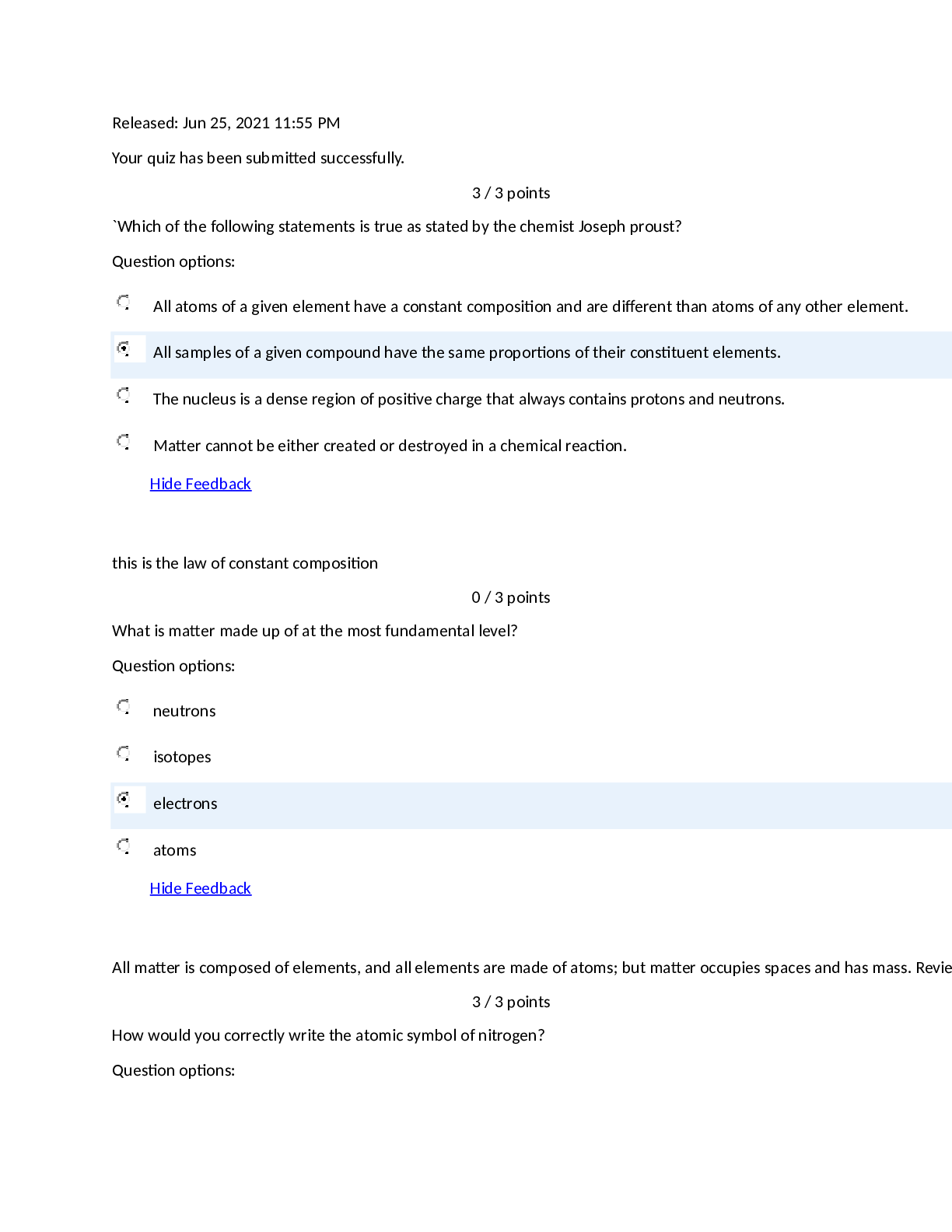


 – Question and Answers.png)



